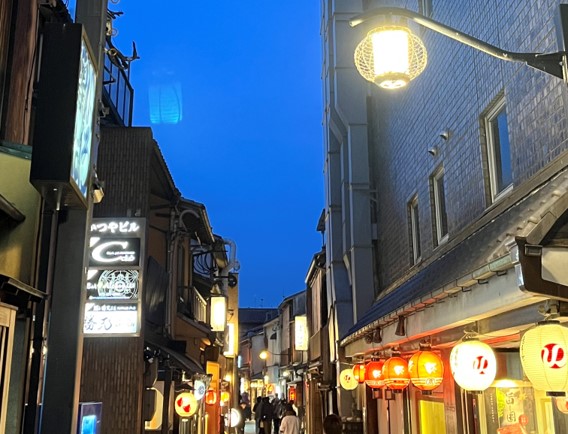
Kyoto was Japan’s capital for 1,075 years before the capital moved to Tokyo. Even today, many Japanese people regard it as the “spiritual capital” and “cultural center” of the country. As a result, the city carries an air of timeless tradition, where history whispers through its streets. During this visit as a reporter of The Postech Times, I explored Kyoto’s blend of tradition and modernity by visiting Yasaka Shrine, Gion Street, Fushimi Inari Shrine, and Kyoto University - each place leaving a distinct imprint on my journey.
From the moment I boarded the train from Kansai International Airport to Kyoto, I could feel Japan’s unique charm. The Hello Kitty-themed train instantly reminded me that this was the character’s home country. After checking in at our accommodation, I headed to our first destination, Yasaka Shrine. Public transportation in Kyoto mainly consists of buses, and an interesting feature of the system is that passengers board from the rear and pay their fare at the front when exiting.
Located at the entrance of Gion Street, Yasaka Shrine boasts a history spanning over 1,350 years, carrying deep historical and cultural significance. The bright red torii gates and the ornate main hall were particularly striking. As I passed through the entrance, I was greeted by the grand Karamon gate and a mystical atmosphere that pervaded the shrine grounds. This shrine offers visitors the opportunity to take part in traditional worship, make wishes, and experience the essence of Japanese culture. The landscape of Maruyama Park in front of the shrine seemed to resemble a traditional East Asian painting. Also, a heron standing by the pond, seemingly a long-time resident, welcomed me. Leaving Yasaka Shrine, I walked to Gion Street, one of the best places to experience Kyoto’s traditional atmosphere. The stone-paved roads lined with wooden machiya (Japanese townhouses) and glowing lanterns captivated me, holding my steps.
The following day, I visited Fushimi Inari Shrine, famous for its thousands of vermilion torii gates that extend endlessly. Walking through the torii pathway, I felt as if I was passing through a mystical tunnel. With each step, I became more immersed in the sacred atmosphere. The sight of sunlight filtering through the torii gates created a breathtaking scene.
Another significant stop was Kyoto University, one of Japan’s most prestigious institutions. Though it was still winter break, the university still felt alive with a quiet academic energy. The campus was filled with an atmosphere of learning and curiosity, and despite the break, I could still observe students and faculty members walking around, contributing to the university’s open and liberal spirit. The stone-built old buildings and wide gardens, along with students deeply immersed in their studies, gave a sense of familiarity, reminding me of our own university.
This journey through Kyoto was a beautiful blend of history, tradition, nature, and academia. From the tranquil shrines and temples to the vibrant streets steeped in tradition, and from the cultural heritage to the intellectual vibrance of the university, every element made the experience richer. The mild winter days further enhanced our visit, making it even more enjoyable. Kyoto left a lasting impression, and I hope to return one day to uncover even more of its hidden charms.


